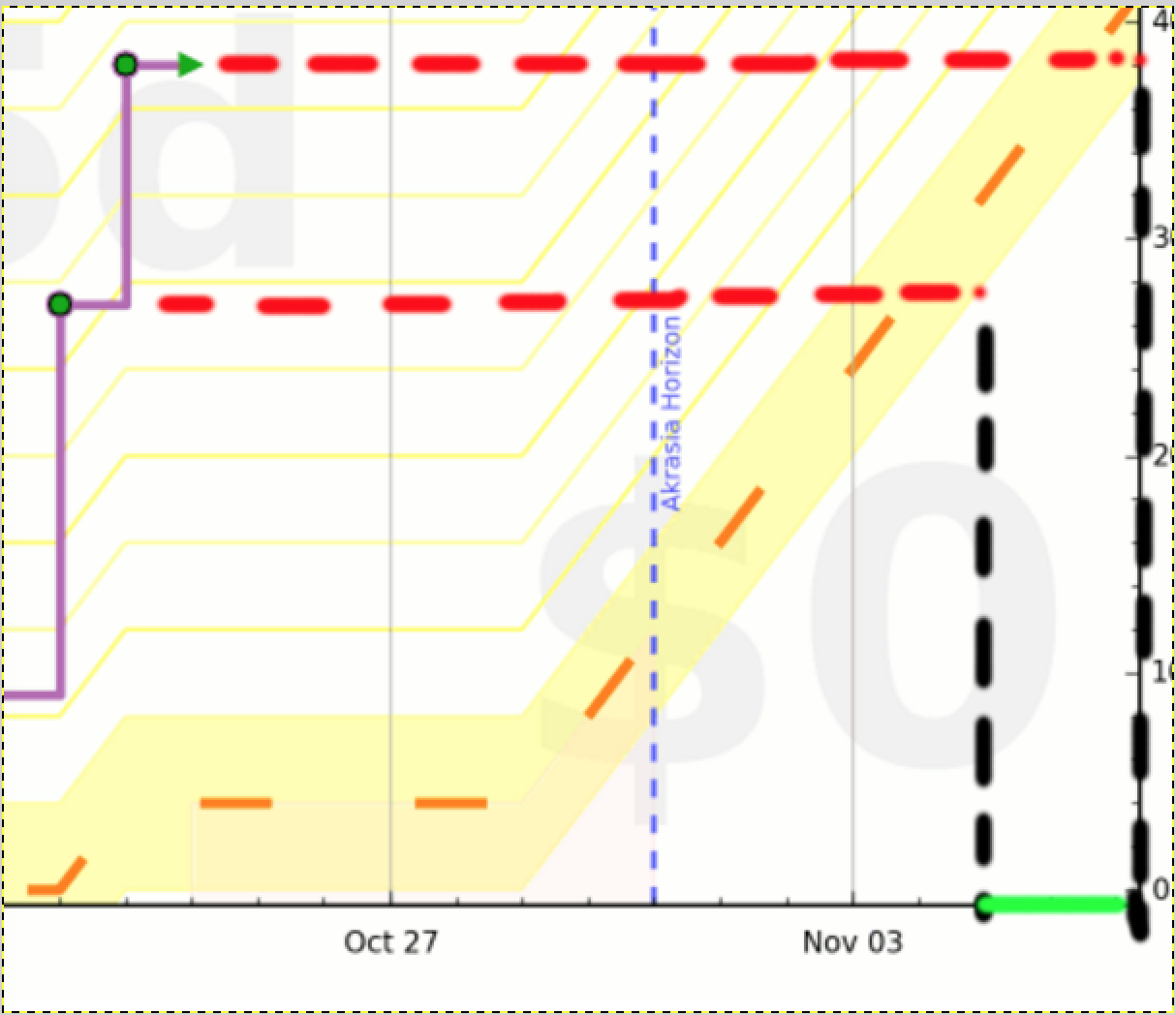Let me try taking a step back. Suppose you announce you have a New Year’s Resolution to “Go to the gym every week this year.”. There’s a few ways to interpret that:
- You literally have to go to the gym once during each week. Going twice in a week is pointless. If there’s ever a Sunday - Saturday period that you didn’t go, you derail.
- You need to go to the gym 52 times before the end of the year, but it doesn’t matter when. At December 31 24:00, you derail if you went fewer than 52 times.
The problem with #1 is that it’s awfully inflexible. It feels like you ought to have a little wiggle room. Suppose you’re going out of town. It seems natural that you should be able to go to the gym on a Monday and a Friday of the same week to “cover” your travelling week.
The problem with #2 is that you are almost certainly going to fail. At the start of the year, going 52 times is very achievable. But when it gets to July, you maybe only went twice. Now you have to go 50 times in 6 months. Eventually it’s December 30th and you need to go to the gym 40 times in the next 48 hours. So you are in an impossible situation! But techincally you have’t failed yet, because the goal is only judged once at the very end of the year.
Beeminder enforces a hybrid of the two that is roughly:
3. You have to go to the gym an average of 1 time per week all year. If your average ever falls below 1, you derail.
This approach lets you benefit from going to the gym extra. If you go 5 times in a week, great! Those all count. But if you sit around and do absolutely nothing, your goal will derail that first week of January rather than letting you get away with doing nothing until December 31 23:59. This means you are accountable for the goal throughout the entire year, not just accountable once at the very end.
Also, the more that you’ve already done, the longer you can slack off. In this example, every time you go to the gym you get 7 days added to your safety buffer. That’s because each gym trip counts as a “week’s worth of gym”. But because you are continuously accountable, there’s always some derail date looming. So you spend the year playing this game with Beeminder, of constantly trying to earn more safety days. Beeminder’s promise to you is that if you play this game and never derail, then when it gets to December 31 you will have gone to the gym 52 times. So you will have accomplished your goal by formula #3 but also by #2.
So if the game is to constantly earn more safety buffer days, a natural question is “How do I get more?” and that’s what the bare min stat shows you. In the gym example it would always be +1 because we already know that each trip to the gym gets you 7 bonus days. If your goal is set up such that doing +1 gets you >= 1 safety day, the bare min will always show as +1[1]. However, if doing +1 gets you less than a day of safety, the bare min will show as the number you need to do in order to get a full day of safety.
I hope this actually helps… haha 
[1] Assuming you have integery turned on for the goal.



